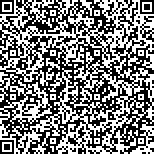下载中心
优秀审稿专家
优秀论文
相关链接
摘要

青藏高原地区以其独特的气候水文特征被称为“亚洲水塔”, 这一地区广泛分布的冻土及其冻融过程对地表非绝热加热与水文过程具有重要影响。然而, 恶劣和复杂的地理环境为这一区域的地表冻融过程本地观测和遥感监测均带来极大挑战。本文利用AMSR-2传感器遥感数据开展青藏高原地区的近地表冻融判别算法研究, 包括判别式算法和季节性阈值算法, 并使用4个青藏高原典型地区的土壤温湿度密集观测网数据对算法进行区域适应性优化。研究特别针对季节性阈值算法进行了两点改进: 首先考虑到地表发射率的变化对于冻融相态的转变指示更为直接,故采用6.9 GHz水平(H)极化的准发射率替换季节性阈值算法中的原有冻结因子; 其次使用一种新的数据归一化方法:标准差归一化方法, 用以替代原有的离差归一化方法, 并通过阈值设定对判别精度的影响分析改进后的优势。结果证明, 冻融判别式算法在升轨时期的整体精度最具优势, 其优势在于能够减少夏季地表发射率复杂变化导致的误判, 基于标准差归一化方法的季节性阈值算法在降轨时期的整体精度具有优势。通过对不同典型区域的冻融土辐射特征和判别精度的分析, 发现地表发射率的变幅(初始液态含水量)大小是影响所有冻融判别算法精度的最关键因素。
The Tibetan Plateau (TP) area is recognized as the “Water Tower of Asia” owing to its significant climatic and hydrological characteristics. However, land surface freeze/thaw transition can hardly be detected in this area because of its harsh and complex geographical environment. This study intends to establish an algorithm to identify near-surface freeze/thaw state using the AMSR-2 satellite data, including discrimination function and seasonal threshold. The 6.925 GHz horizontal polarization Quasi-emissivity with high sensitivity to near-surface freeze/thaw cycle should replace the relative Frost Factor (FFrel). To minimize the effect of small-scale threshold selection, Min-Max normalization can be replaced with a new normalization method, namely, standard deviation normalization method. The parameterization of the discrimination function algorithm to the TP area is proposed to improve algorithm accuracy using four soil moisture and temperature dense observation network data. Results reveal that the classification accuracy of the discriminant function algorithm exhibits the most advantage during ascend period. In addition, this algorithm reduces misclassification points due to complex changes of surface emissivity during summer. The seasonal threshold algorithm based on the standard deviation normalization method shows optimum performance during descend period. Moreover, the amplitude of surface emissivity (initial liquid water content) exhibits an important influence on the algorithm accuracy.

